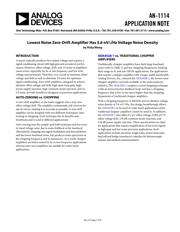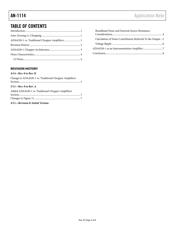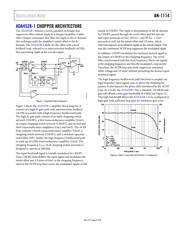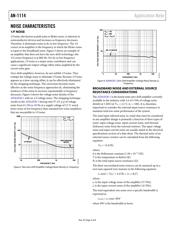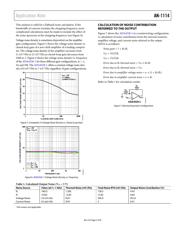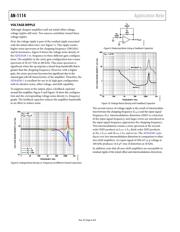Datasheet 搜索 > ADI(亚德诺) > ADA4528-1 数据手册 > ADA4528-1 其他数据使用手册 1/8 页

¥ 0
ADA4528-1 其他数据使用手册 - ADI(亚德诺)
制造商:
ADI(亚德诺)
描述:
30 V零漂移,轨到轨输出精密放大器 30 V Zero-Drift, Rail-to-Rail Output Precision Amplifier
Pictures:
3D模型
符号图
焊盘图
引脚图
产品图
页面导航:
原理图在P3
导航目录
ADA4528-1数据手册
Page:
of 8 Go
若手册格式错乱,请下载阅览PDF原文件

AN-1114
APPLICATION NOTE
One Technology Way • P. O. Box 9106 • Norwood, MA 02062-9106, U.S.A. • Tel: 781.329.4700 • Fax: 781.461.3113 • www.analog.com
Lowest Noise Zero-Drift Amplifier Has 5.6 nV/√Hz Voltage Noise Density
by Vicky Wong
Rev. B | Page 1 of 8
INTRODUCTION
A sensor typically produces low output voltage and requires a
signal conditioning circuit with high gain and accurate dc perfor-
mance. However, offset voltage, drift, and 1/f noise in amplifiers
cause errors, especially for dc or low frequency and low level
voltage measurements. Therefore, it is crucial to minimize offset
voltage and drift as well as eliminate 1/f noise for optimum
signal conditioning. Zero-drift amplifiers, designed to achieve
ultralow offset voltage and drift, high open-loop gain, high
power supply rejection, high common-mode rejection, and no
1/f noise, provide benefits to designers in precision applications.
AUTO-ZEROING vs. CHOPPING
A zero-drift amplifier, as the name suggests, has a near zero
offset voltage drift. The amplifier continuously self-corrects for
any dc errors, making it as accurate as possible. A zero-drift
amplifier can be designed with two different techniques: auto-
zeroing or chopping. Each technique has its benefits and
drawbacks and is used in different applications.
Auto-zeroing uses the sample-and-hold technique and has more
in-band voltage noise due to noise foldback to the baseband.
Alternatively, chopping uses signal modulation and demodulation
and has lower baseband noise, but produces noise spectrums at
the chopping frequency and its harmonics. As a result, chopper
amplifiers are better suited for dc or low frequency applications
whereas auto-zero amplifiers are suitable for wider band
applications.
ADA4528-1 vs. TRADITIONAL CHOPPER
AMPLIFIERS
Traditionally, chopper amplifiers have fairly large baseband
noise (refer to Table 1) and low chopping frequencies, limiting
their usage to dc and sub-100 Hz applications. For applications
that require a chopper amplifier with a larger usable bandwidth,
Analog Devices, Inc., released the ADA4528-1, the lowest noise
chopper amplifier currently available in the semiconductor
industry. The ADA4528-1 employs a novel chopping technique
(with an autocorrection feedback loop) and has a chopping
frequency that is five to ten times higher than the chopping
frequencies of traditional chopper amplifiers.
With a chopping frequency at 200 kHz and an ultralow voltage
noise density of 5.6 nV/√Hz, this design breakthrough allows
the ADA4528-1 to be used in wider band applications where
traditional chopper amplifiers cannot be used in. In addition,
the ADA4528-1 also offers 0.3 µV offset voltage, 0.002 µV/°C
offset voltage drift, 158 dB common-mode rejection, and
150 dB power supply rejection. These specifications are ideal
for applications that require amplification of low level signals
in high gain and low noise precision applications. Such
applications include precision weigh scales, sensor front ends,
load cell and bridge transducers, interface for thermocouple
sensors, and medical instrumentation.
器件 Datasheet 文档搜索
AiEMA 数据库涵盖高达 72,405,303 个元件的数据手册,每天更新 5,000 多个 PDF 文件

